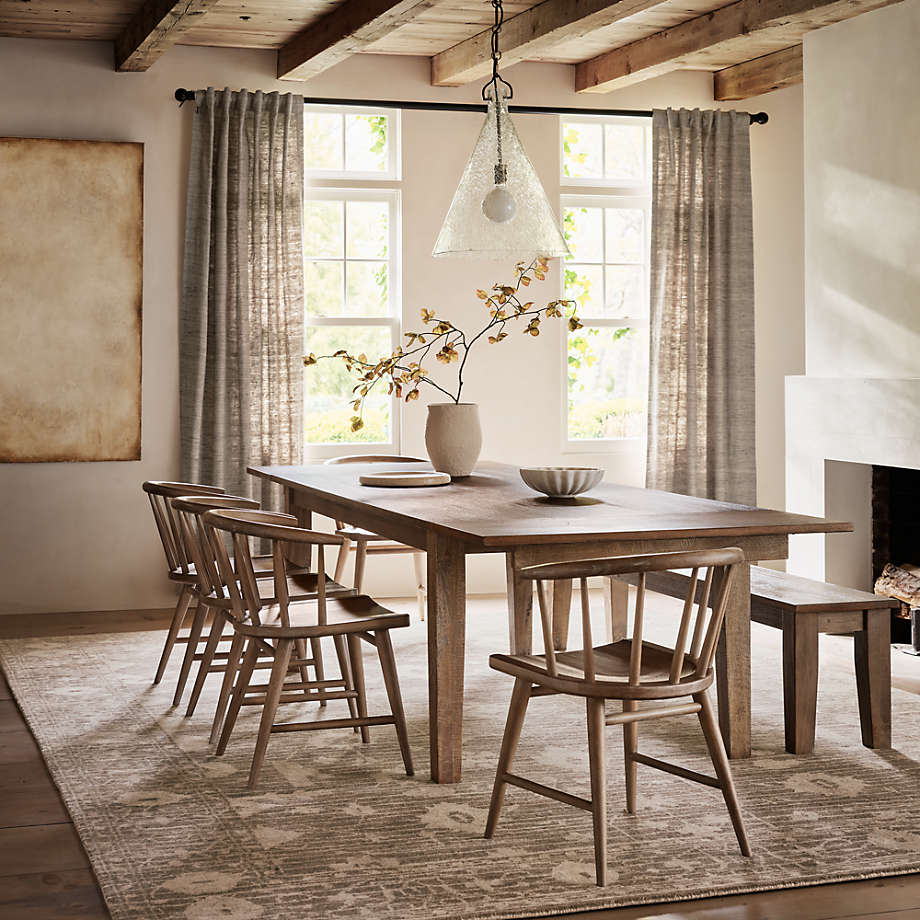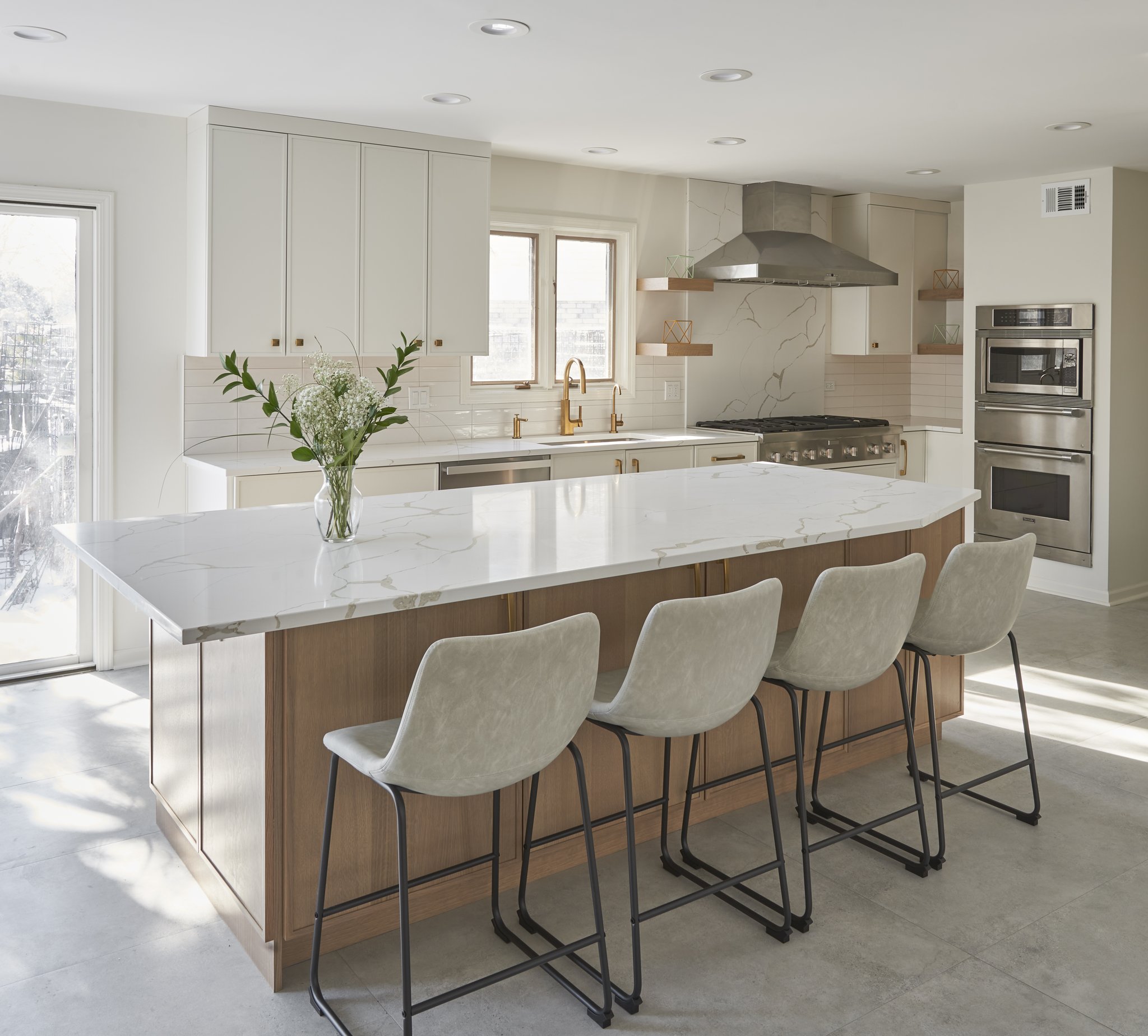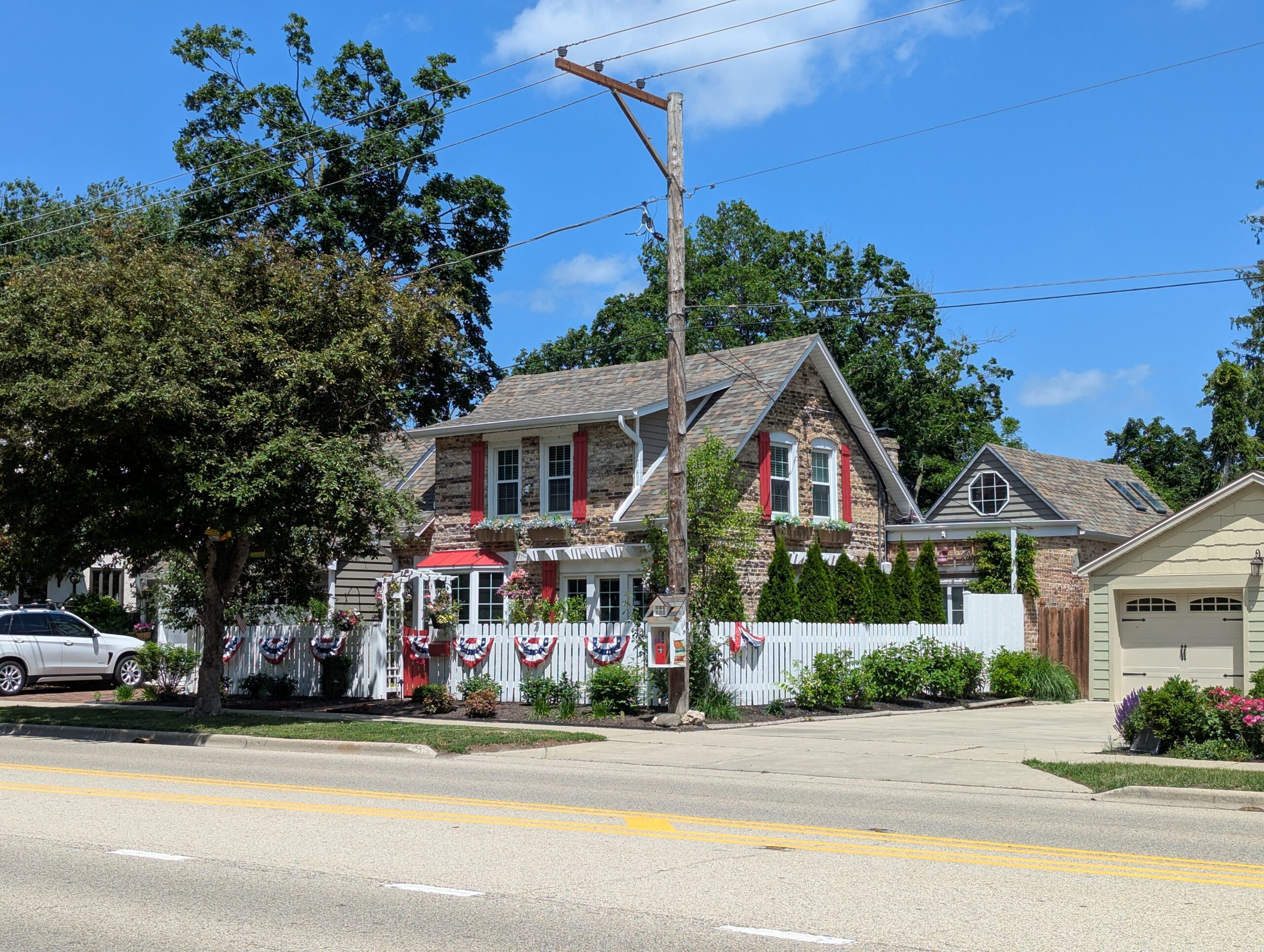In the sprawling suburbs of Chicago and the North Shore, where grand Victorian, Craftsman, and Tudor-style homes dot the landscape, homeowners often grapple with a common dilemma: how to embrace the airy, connected flow of open-concept living while honoring the rich architectural heritage that gives these residences their soul. Large suburban homes, with their generous square footage and intricate details like crown molding, built-in cabinetry, and original hardwood floors, offer a perfect canvas for remodeling.
Yet, the fear of stripping away that timeless charm can make the idea of knocking down walls feel like a risky proposition. At 123 Remodeling, we’ve helped countless families in areas like Winnetka, Glenview, and Northbrook transform their spaces into modern havens that still whisper stories of the past. This article explores thoughtful strategies to achieve open-concept designs in historic suburban homes, blending the best of old and new without compromise.
Balancing Openness with Architectural Integrity
When remodeling a large suburban home, the key to introducing open-concept elements lies in a careful assessment of the existing structure. Many of these homes, built in the early 20th century, feature compartmentalized rooms designed for formal living – think separate dining rooms, parlors, and kitchens that reflect the era’s emphasis on privacy and hierarchy. According to a study by the American Institute of Architects (AIA), over 60% of homeowners remodeling historic properties prioritize maintaining original features while adapting to contemporary lifestyles (AIA Home Design Trends Survey, 2022).

Start by identifying load-bearing walls and non-negotiable historic elements, such as ornate fireplaces or leaded glass windows, which can serve as focal points in the new layout. Instead of complete demolition, consider partial openings, like arched pass-throughs or wide doorways that connect spaces visually without erasing the home’s character. For instance, in a Glenview Tudor revival, we might preserve the original wood-paneled walls while removing a non-structural partition to merge the kitchen and family room, creating a seamless flow that feels both expansive and intimate.
Expert Tip: When evaluating walls for removal, always consult a structural engineer early in the process. In historic homes, hidden surprises like outdated wiring or plaster lath can complicate openings – I’ve seen projects where reinforcing with steel beams not only ensures safety but also allows for creative ceiling designs that mimic original coffering, adding unexpected elegance.
Preserving Historic Details in Modern Layouts
The charm of suburban historic homes often resides in their intricate details – think hand-carved banisters, herringbone-patterned floors, or stained-glass transoms that evoke a sense of nostalgia. To incorporate open-concept living without sacrificing these treasures, integrate them as design anchors. For example, rather than hiding away a vintage chandelier in a closed-off dining room, reposition it as a centerpiece in a newly opened great room, where it illuminates a multifunctional space for dining, lounging, and entertaining.

Brands like Restoration Hardware offer reproduction fixtures that complement originals, ensuring cohesion. Data from the National Trust for Historic Preservation indicates that homes retaining at least 70% of their original features see higher satisfaction rates among owners post-remodel (National Trust Report on Historic Homeownership, 2021). In practice, this might mean refinishing original oak floors to span across the opened areas or using salvaged materials to extend built-ins, creating a narrative thread that ties the home’s history to its refreshed purpose.
Expert Tip: For color palettes in open historic spaces, layer neutrals with subtle accents drawn from original elements – like matching paint to faded wallpaper remnants. This technique, often overlooked, creates visual continuity; in one Northbrook project, we used Farrow & Ball’s ‘Elephant’s Breath’ to bridge Victorian moldings with modern cabinetry, making the space feel evolved rather than renovated.
Integrating Functional Zones Without Division
In large suburban homes, open-concept remodeling shines by defining zones within the expansive layout, ensuring the space feels purposeful rather than cavernous. Kitchens, often the heart of these transformations, can expand into adjacent areas while nodding to historic aesthetics – imagine installing a Sub-Zero refrigerator within custom cabinetry that echoes the home’s original millwork. This approach maintains charm by avoiding stark modern intrusions; instead, opt for islands with turned legs reminiscent of antique furniture or countertops from Caesarstone that mimic the veining of vintage marble.

A report from Houzz highlights that 55% of kitchen remodels in historic homes incorporate open layouts to improve family interaction (Houzz Kitchen Trends Study, 2023). To prevent the loss of intimacy, incorporate subtle dividers like half-walls topped with glass or sliding barn doors crafted from reclaimed wood, which provide flexibility without permanent enclosure. These elements allow light to flood through, enhancing the open feel while preserving the cozy nooks that define historic living.
Expert Tip: When zoning an open kitchen-living area, embed smart storage in unexpected places, such as under-stair pantries or floor-to-ceiling cabinets disguised as paneling. This not only maximizes functionality in large homes but also hides modern appliances, preserving the illusion of historic purity – a trick that saved square footage in a Wilmette remodel without altering the home’s footprint.
Lighting and Flow: Enhancing Charm Through Illumination
Lighting plays a pivotal role in marrying open-concept designs with historic charm, as it can highlight architectural gems while fostering a sense of warmth. In suburban homes with high ceilings and generous windows, natural light becomes a natural ally, but strategic additions elevate the effect. Recessed LED fixtures from brands like Lutron can be installed to accentuate crown molding or exposed beams without overwhelming the space, while pendant lights over islands draw the eye to preserved details like tin ceilings.

The Illuminating Engineering Society notes that proper lighting can increase perceived space by up to 20% in remodeled homes (IES Lighting Handbook, 2020). To maintain flow, ensure pathways remain unobstructed, perhaps by aligning furniture along original sightlines or using area rugs to subtly delineate zones. This creates a rhythmic progression through the home, where the openness invites movement, yet the charm of yesteryear grounds every step.
Expert Tip: Layer lighting with dimmable options to adapt to different moods – historic homes often have uneven natural light due to small windows, so installing motorized shades integrated with smart systems like those from Hunter Douglas allows for precise control, enhancing both ambiance and the visibility of intricate details like plaster medallions.
As you envision transforming your large suburban home into an open-concept retreat that honors its historic roots, remember that the magic lies in thoughtful integration. At 123 Remodeling , we specialize in high-end design-build projects that bring such visions to life across Chicago, Evanston, Wilmette, and other North Shore suburbs. Our team of experts is ready to guide you through a remodel that blends modernity with timeless appeal.
Contact us today to schedule a consultation and start preserving your home’s charm while embracing the open living you desire.




